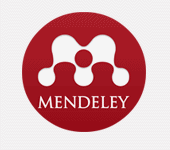ULAMA'S VIEWS REGARDING THE LAW OF PRESERVING BODIES AS LEARNING MATERIAL (CADAVER)
Abstract
Embalming a corpse without a clear purpose is prohibited, even forbidden, in Islam, while according to the 2007 MUI fatwa, embalming for educational purposes is permitted. However, some scholars have different views, some reject this practice on the grounds that the corpse must be honored and it is prohibited to damage or change body parts for a long time. Furthermore, there are other opinions that state that they agree and remain permitted as long as it is for a clear purpose. This study aims to determine the law of embalming a corpse according to the views of scholars in Sumedang Regency and Majalengka Regency, existing regulations in Indonesia, and the opinions of health workers and nursing academics. In this study, the data analysis method used is a qualitative field data analysis method with an in-depth interview approach to explore the views of several figures consisting of scholars, health workers and academics in nursing. The results of the study show that religious scholars, health workers, and nursing academics in Sumedang Regency and Majalengka Regency agree and allow the act of preserving corpses for educational purposes, namely as cadavers, because it is considered that this can provide many benefits such as being able to help the greater good, namely to increase knowledge and cure millions of sick people for the development of human knowledge in the world.
Keywords
Full Text:
PDFReferences
Bintarawati, Fenny, and Maskur Rosyid. 2021. “Mengurai Isti ḥ s ā n Sebagai Sumber Hukum Islam.” (September).
G, Amrit, Satyashree Ray, and Soumyashree Mohapatra. 2023. “Preparation of Soft Embalmed Cadavers by the Modified Thiel Embalming Technique for Surgical Skill Training and Development of a Universal Quantitative Scoring System to Assess the Suitability of Soft Embalmed Cadavers for Such Training Purposes.” Cureus 15(8):8–15. doi: 10.7759/cureus.43991.
Habibi, Ahmad Azwar, Qosita, and Mahesa Paranadipa Maikel. 2014. “Penggunaan Kadaver Pada Praktikum Anatomi : Aspek Hukum Fikih, Medikolegal Dan Pengetahuan Mahasiswa.” Kongres Xv & Hut Ke052 Paai 2023-43 Lummens 1–10.
Majelis Ulama Indonesia. 2007. “Pengawetan Jenazah Untuk Kepentingan Penelitian.” Himpunan Fatwa MUI.
Nabil, and Bambang Sukoco. 2022. “Kontradiksi Aturan Pemulasaraan Jenazah Di Indonesia.” Perspektif Hukum 26–49. doi: 10.30649/ph.v22i2.124.
Nabil, Nabil. 2022. “PENGARUH PENGGUNAAN LARUTAN FORMALIN 10% DAN LARUTAN FORMALIN 10% + FENOL 2.5% SEBAGAI BAHAN PENGAWETAN ( EMBALMING) PADA DERAJAT PERUBAHAN POST MORTEM SECARA GROSS PADA KELINCI PUTIH RAS NEW ZEALAND (Orictolagus Cuniculus) JANTAN.” Surabaya Biomedical Journal 1(3):178–86. doi: 10.30649/sbj.v1i3.34.
Romi, Muhammad Mansyur, Nur Arfian, Dwi Cahyani, and Ratna Sari. 2019. “Muhammad Mansyur Romi et Al. Is Cadaver Still Needed in Medical Education? IS CADAVER STILL NEEDED IN MEDICAL EDUCATION?” Jurnal Pendidikan Kedokteran Indonesia-The Indonesian Journal of Medical Education 8(3):105–12.
Sahreni, Sukma. 2019. “Perbandingan Pemberian Formalin Murni Dengan Formalin Campuran Terhadap Pengawetan Mencit (Mus Musculus) Dilihat Dari Perubahan Warna Kulit.” Jurnal Keperawatan 9(2):74–78.
Saifuddeen, Shaikh Mohd. 2023. “An Islamic Perspective on the Usage of Bodies of the Deceased in the Teaching and Learning of Anatomy.” TAFHIM: IKIM Journal of Islam and the Contemporary World 16(1):1–24. doi: 10.56389/tafhim.vol16no1.3.
Sandwinata, Muh. Fhajar. 2019. “Analisis Dna Dalam Kasus Forensik.” Teknosains: Media Informasi Sains Dan Teknologi 12(1):1–10. doi: 10.24252/teknosains.v12i1.7863.
Susanti, Rika. 2015. “Transportasi Jenazah Dan Aspek Medikolegal.” Jurnal Kesehatan Andalas 4(2):600–606. doi: 10.25077/jka.v4i2.307.
Syayuthi, Abdurahman. 2020. “Penggunaan Jenazah Untuk Kepentingan Penelitian Ilmiah Perspektif Fazlur Rahman.” Analytica Islamica 22(1):69–88.
Villacorta, Pio Renato F., Harivelle Charmaine T. Hernando, Abdel Jeffri A. Abdulla, and Jupiter Kelly H. Barroa. 2019. “A Comparative Study of Thiel Soft-Embalmed and Formalin Preserved Cadavers for Anatomy Dissection.” Acta Medica Philippina 53(1):12–20. doi: 10.47895/amp.v53i1.235.
DOI: http://dx.doi.org/10.30829/jai.v14i1.22345
Refbacks
- There are currently no refbacks.
Copyright (c) 2025 Shena Ravina Anjani, Cindy Rantikal Variza, Priska Tiarany Gushela, Regina Julia, Shelpi Anggraeni, Zahara Rasyifa, Tedi Supriyadi, Akhmad Faozi

This work is licensed under a Creative Commons Attribution-ShareAlike 4.0 International License.





